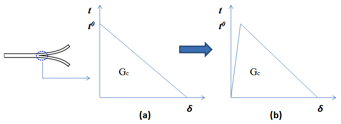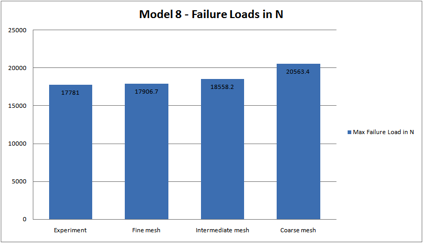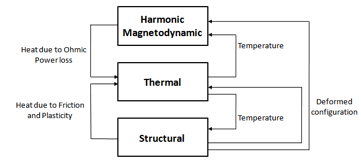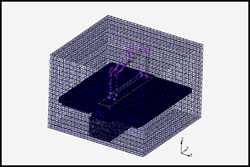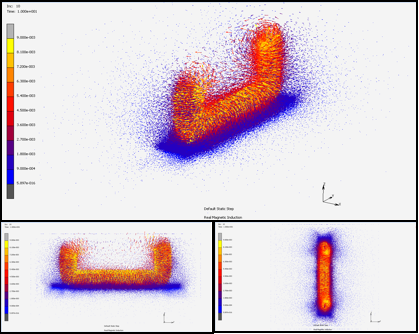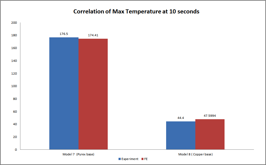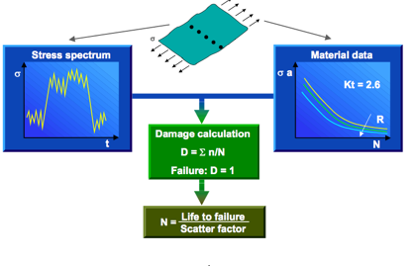Case Studies
Composite non-linear damage modeling – Research oriented projects
Significant commercial and research interests in replacing the conventional metallic structures with composite materials in aircraft industries, are happening because of the strong reason being composites have a high stiffness to weight ratio property as compared to conventional metallic structures. However on the contrary side, composites have its own disadvantages in predicting its complex failure mechanisms.
At MGS, we have proven competence to numerically capture complex failure modes such as delamination, debonding, intra-laminar cracks using non-linear FEM with accurate correlation against experimental results and thereby optimizing new designs for improved structural performances.
Multiphysics optimization and assessments
At MGS, we have cutting edge Multiphysics competences. This is one of the services provided to investigate new innovative welding/joining method using Induction heating mechanisms for composites. A numerical method using Multiphysics capability of a commercial package, has been established and predicted thermal induction trends were compared against the experimental results in this work. This showcases our higher end multi-physics competence from Magic Square Tech.
Conventional Industrial Structural assessments – Static and Fatigue
At MGS, we have quite proven conventional structural assesments for Static, Fatigue, Damage tolerance and vibrational loads for aerospace structures.
Development of a customised user material (Non-linear material model) subroutine to model the cyclic response of high strength low alloy tubing steels
• UMAT subroutine is a typical FORTRAN code to define any complex, material constitutive models that cannot be modelled with the standard built-in ABAQUS material models.
• Algorithm of the user material UMAT code is to represent the non-linear material behaviour through direct manipulation of the stress and plastic states of the FE model at a fundamental level.
• Capable of modelling complex loading scenarios i.e., arbitrary cyclic loading procedures such as load, unload and reload cycles, typically used for introduction of residual stresses in C-ring specimens and simulation of fracture toughness tests under tensile loads after introduction of a crack.
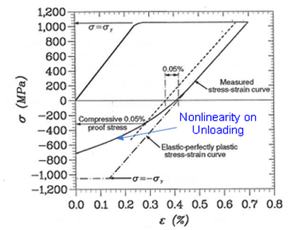
Fig 1. Stress strain response of typical non-linear steel material in first cycle
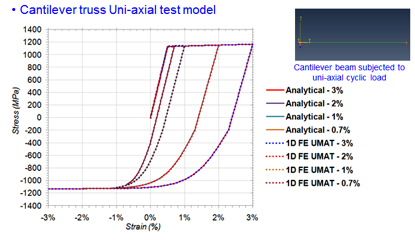
Fig 2. Tensile-Compressive stress strain response profiles, UMAT1D
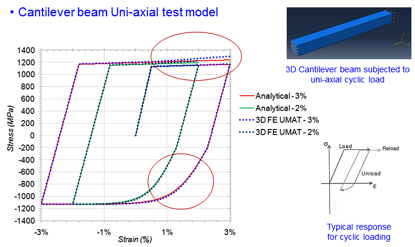
Fig 3. Tensile-Compressive (load – unload- reload) profiles, UMAT3D
Applications / Benefits:
• Performed FE simulations of the mechanical preloading of the C-ring specimens using ABAQUS to validate the measured residual stress distributions (typical neutron diffraction measurements)


Fig 4. Schematics showing introduction of Residual Stress into C-ring specimen
• Performed FE simulation of the deformation of the fracture toughness tests on C-ring specimens to predict and validate the measured load displacement response curves
• Interpret the results in relation to the fracture of C-ring specimens to calculate the crack tip stress distributions and fracture parameters
Structural dynamic analysis capability:
MGS offers virtual series product engineering solutions such as creation or development of Finite Element (FE) and dynamically reduced super-element models of typical powertrains.
In a motor vehicle, the term powertrain or powerplant refers to the group of components that generate power and deliver it to the road surface, water, or air i.e., the mechanism that transmits the drive from the engine of a vehicle to its axle. This includes the engine, transmission, drive shafts, differentials, and the final drive. In a wider sense, the power-train includes all of its components used to transform stored (chemical, solar, nuclear, kinetic, potential, etc.) energy into kinetic energy for propulsion purposes.
These virtual powertrain models can be used to carry out structural dynamic (vibration and acoustic) analyses of a variety of Powertrain systems built using finite element methods and dynamic model reduction methods. Types of analyses include Powertrain normal mode (free-free vibration), dynamic model reduction and forced vibration analysis, mount response analysis, etc., Use of static & dynamic model reduction techniques reduces solving time and storage requirements, and helps us in conducting complex or large system level dynamic analyses at quicker rate and also allows us to perform Design of Experiments(DOEs), for design optimisation studies.
Also, we devise numerical methods to correlate the simulation results with experimental measurements. Also, we develop computational techniques to simulate finite element or superelement analysis of Impact hammer test to predict the first modes or natural frequencies of ancillary components of typical PT assemblies and correlate with the measured resonant frequencies and also to carry out design optimisation studies.




